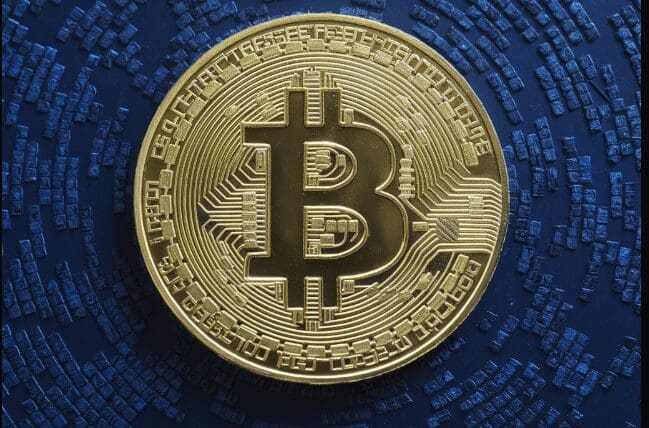In this article, I will explain why Bitcoin fees are so high. Some of the critical factors include network congestion, limited block space, and increased demand.
Knowledge in these areas can allow for better utilization of Bitcoin network resources and more effective cost management for transactions addressed.
Why Are Bitcoin Fees So High? Here Is the Main Reason Behind This
Size of the Transaction

Due to the capacity limitations of the network and enormous demands for transactions, Bitcoin fees may be high.
Only a few numbers of transactions can be accommodated by each block on the Bitcoin Blockchain, which leads to a jam when there is an increase in transaction volume.
In order of urgency, with others charging higher fees, users pay higher fees for faster processing, increasing the overall costs incurred during transaction requests.
Additionally, fixed block size and time between blocks mean that next-block space competition shoots up during peak periods, increasing fees.
This market-driven mechanism ensures timely settlement but could result in significant costs during peak demand.
Demand for Block Space

Due to stiff competition for block space, the Bitcoin rates have become higher. Each Bitcoin block is limited by size; hence, it can handle a maximum number of transactions.
For instance, when many individuals attempt to send money at once, this causes an imbalance between supply and demand, increasing transaction costs.
In other words, users who offer higher fees can entice miners to consider their transactions first, thus causing all-out bidding among the people involved.
These fluctuations in demand due to bidding result in increased fees during high periods because whoever offers more has their payment settled faster.
Network Congestion
Network congestion is one of the main reasons Bitcoin fees are high due to the many transactions being more than can be accommodated in the blockchain.
Users will have to compete for their inclusion whenever there are so many unconfirmed transactions that surpass the space provided for them in the next block.
As such, prices increase since people want to ensure they process their transactions faster.
In heavy network times, limited block space leads to a backlog that worsens crowding and further increases transactional rates.
Correspondingly, this struggle by networks against peak loads may be inferred from large amounts to be paid as tariffs.
Popularity of Bitcoin Ordinals and BRC-20 Tokens
These have resulted in more transactions taking place on the network. Moreover, these protocols enable non-fungible token (NFT) or fungible token creation on top of the Bitcoin blockchain, adding to congestion.
The Bull Run Effect

Sometimes, when the market is booming, fees for Bitcoins go up because of increased market action and investor excitement.
As prices increase and more people rush into Bitcoin to buy, sell, or trade it, transaction demand rises rapidly.
This clogs the network’s capacity, leading to congestion and higher fees.
The urge by users to take advantage of rising prices forces them to pay more so that their transactions can be processed faster, thus increasing the overall costs associated with these exchanges.
Increased transaction volume and higher fee bids lead to marked spikes in Bitcoin fees during heightened interest.
What Are Bitcoin Fees?

There is a charge every time you want to send a Bitcoin. Miners confirm your transaction, and in doing so, they get paid by you. The fees also help incentivize and reward miners for their work.
Nevertheless, sometimes Bitcoin charges can become expensive. On November 23, it was reported that 23 costs of operating a Bitcoin network surged as high as $15 per transaction.
Similarly, on November 9th, 2023, the November nine bitcoin transaction rose to $16.08. This is compared to this year’s range, oscillating between about fifty cents and seven dollars.
How To Avoid High Bitcoin Transaction Fees?
Some ways to avoid high transaction fees on Bitcoin:
Transact During Off-Peak Times
Fees tend to be lower when the network is not as busy as on weekends or late nights.
Use SegWit Addresses
SegWit addresses reducing the size of transactions, which can decrease fees.
Batch Transactions
If you have many transactions, send them together in one transaction to pay less fees.
Set Custom Fees
Find wallets that let you set custom fees for your transactions. This way, you can choose a lower cost and wait for confirmation.
Monitor the Mempool
Look into the mempool status about unconfirmed transactions. It enables you to decide on a proper fee.
Use the Lightning Network
The Lightning Network processes smaller payments off-chain, thus dramatically reducing transaction costs.
Consolidate UTXOs
You can minimize the size and complexity of your transaction by managing your Unspent Transaction Outputs (UTXOs) efficiently.
Choose Low-Fee Exchanges
Some exchanges offer low transaction rates. Investigate these places and use them, thereby reducing expenses.
Conclusion
In conclusion, bitcoin transaction charges are expensive mainly due to traffic jams in the network, small block space, and more requests.
The growth of new protocols like Bitcoin Ordinals and BRC-20 tokens has added to this congestion.
Miners prefer transactions with more fees, and a significant backlog in the mempool may lead to increased costs.
However, increases make good use of them. SegWit addressing, batch handling of transactions, and the lightning network offer some relief from these fees, but not everyone uses them fully.
If one can understand these factors and how they can be used to control fee structure, there would be less cost-linked involvement on the Bitcoin network.
Thanks For Reading Our Articles. Please Leave a Comment, Give Us Feedback, And Hit the Like Or Dislike Button Of Your Choice.










